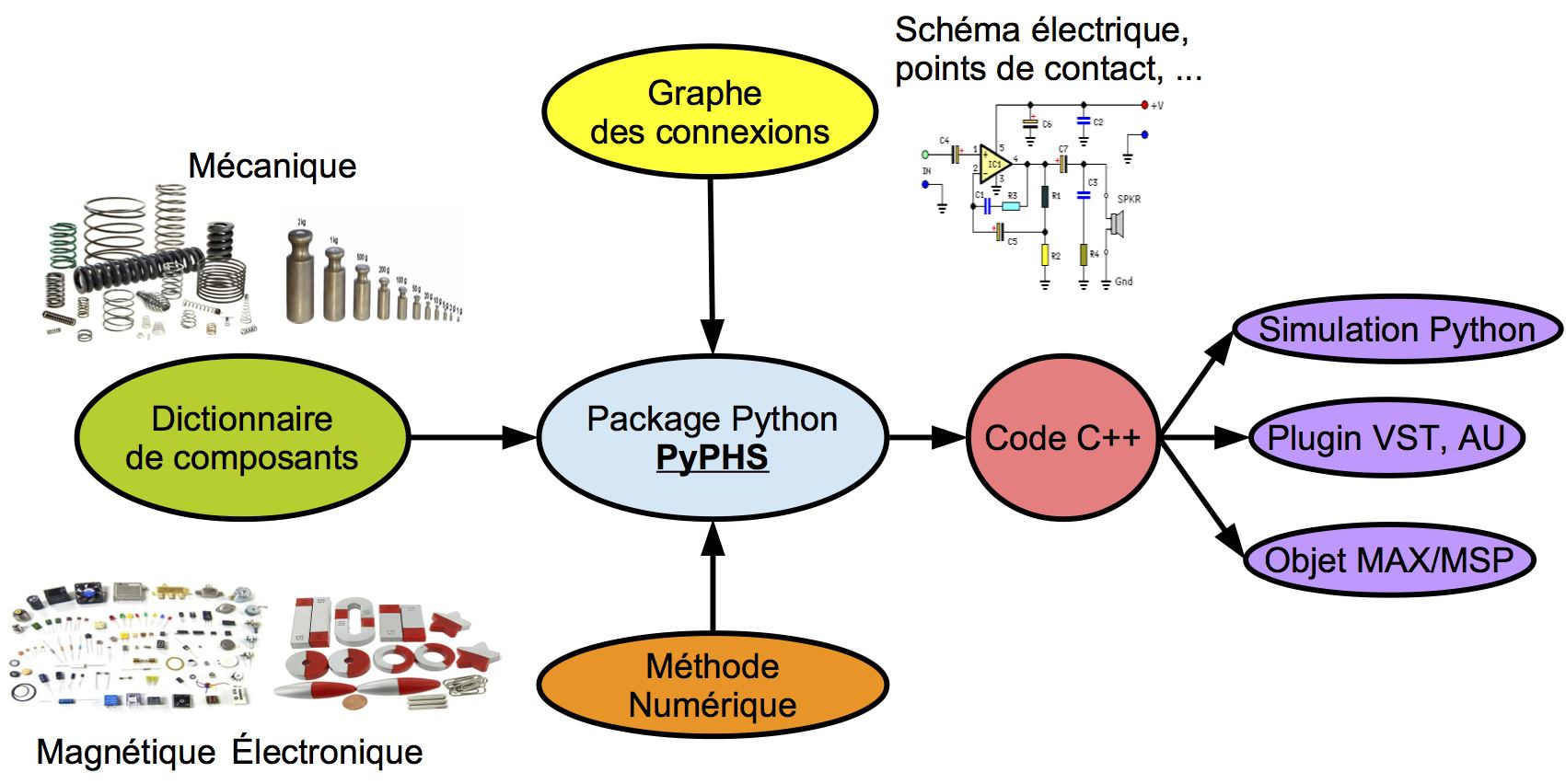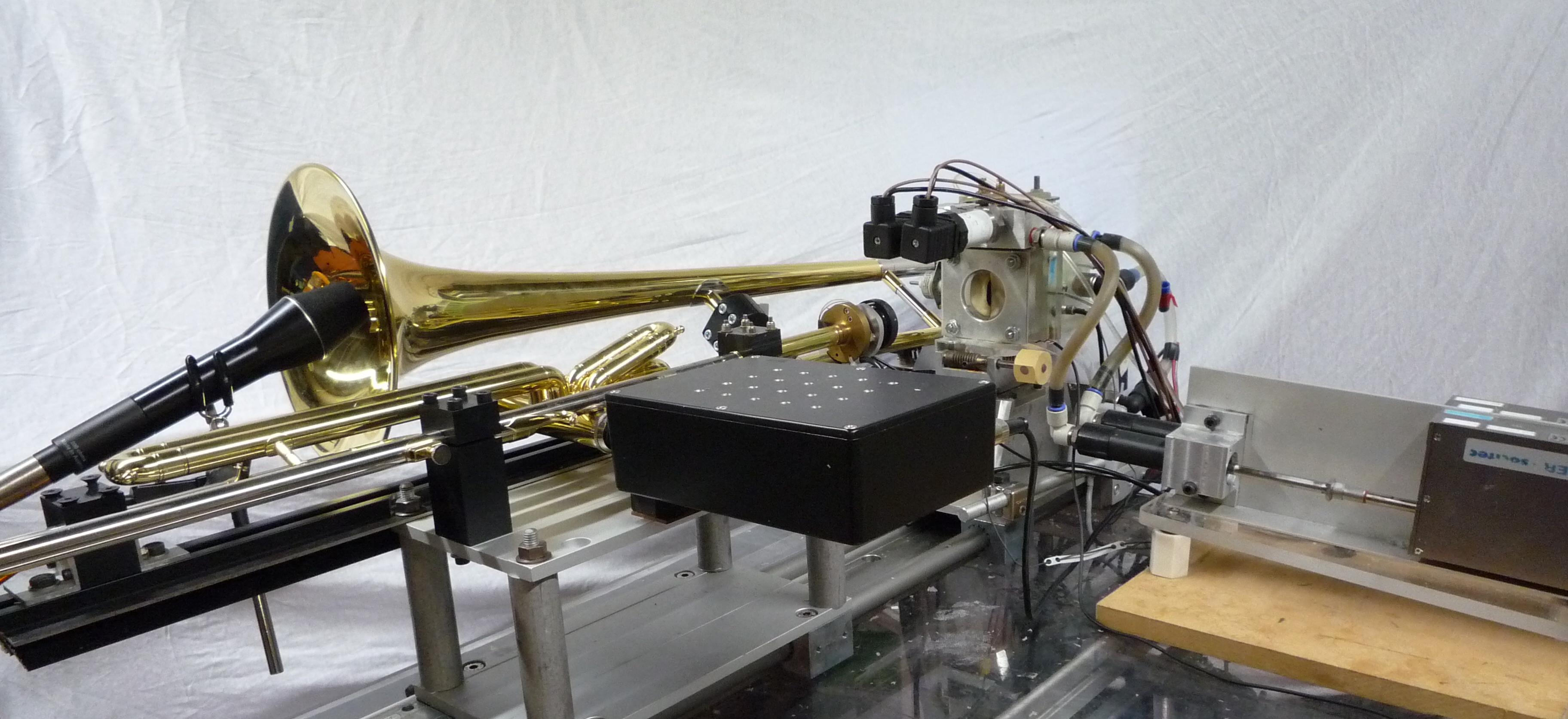S3AM team in the television programme “L’oeil et la main” on France 5
The television programme “L’oeil et la main – Sous la ville lumière : Paris souterrain” presented several works of the S3AM team (artificial mouth, Snail) and the anechoic chamber (7th minute of the video):
https://www.france.tv/france-5/l-oeil-et-la-main/137531-sous-la-ville-lumiere-paris-souterrain.html
Workshop on Physical Sound Synthesis: Ness/STMS/LAM-IJLRA
The “NESS” team (Next Generation Sound Synthesis, ERC project) of the University of Edinburgh was in Paris the 13 and 14 october 2016 to present scientific and musical results of the project (Schedule).
S3 team presentations:
Summer school Science and Voice: expression, use and care of the human vocal instrument
26th to 30th september 2016, Porquerolles, France : http://www.gipsa-lab.fr/summerschool/eesv2016/
- Course (Thomas Hélie and Fabrice Silva): Physique de la dynamique glottique : aspects énergétiques et auto-oscillations (in french: summary, slides)
- Practical work (Thomas Hélie and Fabrice Silva): Acoustique du conduit vocal (in french: summary)
PhD defense: Antoine Falaize
Tuesday 12 july 2016, 2.30 pm – Ircam, salle Igor Stravinsky (http://www.ircam.fr/contact.html)
Antoine FALAIZE will defend his PhD work entitled:
“Modeling, Simulation, Code Generation and Correction of Multi-Physical Audio Systems: Approach by Network of Components and Port-Hamiltonian Formulation”

This work took place in the Project-Team Sound Signals and Systems and in the Analysis-Synthesis team of Laboratoire Sciences et Technologies de la Musique et du Son, IRCAM-CNRS-UPMC under the supervision of Thomas Hélie (Researcher, UMR STMS, IRCAM).
It is part of the ANR (French National Research Agency) project: ANR-HamecMopsSys.
This work will be defended to the following jury:
M. Stefan Bilbao Rapporteur, Professeur, Acoustics and Audio Group, Edinburgh University
M. Pierre Rouchon Rapporteur, Professeur, Centre Automatique et Systèmes, Mines-ParisTech
M. Benoît Fabre Examinateur, Professeur, Équipe Lutherie Acoustique Musique, IJLRA, Université Paris 6
M. Yann Le Gorrec Examinateur, Professeur, École Nationale Supérieure de Mécanique et des Microtechniques, FEMTO-ST/AS2M
M. Aziz Hamdouni Examinateur, Professeur, Laboratoire des Sciences de l’Ingénieur pour l’Environnement, Université de La Rochelle
M. Hervé Lissek Examinateur, Professeur, LTS2, École Polytechnique Fédérale de Lausanne
PhD defense: Nicolas Lopes
Wednesday 15 june 2016, 2.30pm – Ircam, salle Igor Stravinsky (http://www.ircam.fr/contact.html)
Nicolas LOPES, will defend his PhD work entitled:
“Passive approach for the modelling, the simulation and the study of a robotised test bench for brass instruments.”
This work took place in the Project-Team Sound Signals and Systems and in the Analysis-Synthesis et Instrumental acoustics teams of Laboratoire Sciences et Technologies de la Musique et du Son, IRCAM-CNRS-UPMC.
It is part of two ANR (French National Research Agency) projects: ANR-HamecMopsSys and ANR-Cagima.
This work will be defended to the following jury:
Brigitte d’Andréa-Novel Rapporteur – Professeur Mines-ParisTech
Christophe Vergez Rapporteur – Directeur de Recherche, CNRS LMA
Benoît Fabre Examinateur – Professeur, LAM, Institut d’Alembert, UPMC
Isabelle Terrasse Examinateur – Directrice de Recherche, Airbus Group Innovations
Bernhard Maschke Examinateur – Professeur Université Claude Bernard, Lyon 1
Thomas Hélie Directeur de thèse – Chargé de Recherche, Laboratoire STMS, CNRS
René Caussé Co-directeur de thèse – Directeur de Recherche, Laboratoire STMS, Ircam
This thesis is to be seen against the robotic, the automatic, and the musical acoustics backgrounds.
It provides a study of a robotised test bench for brass instruments. This study is divided into three parts: the passive modelling of the system, its simulation and its development. The modelling is done using a passive formalism, namely, the ports-Hamiltonian systems. The main parts of the complete system are: an air supply for the breath, an acoustic exciter itself composed of a couple of artificial lip and an air jet, and an acoustic resonator. In this work, the acoustic resonator is a valve trombone. A new model for the air jet generated between the lips is proposed. This model aims at providing a power balance, which is closer to the real system than other commonly used models. Refinements are added to the jet model to obtain a self-oscillating complete model. The discrete gradient method is presented to perform simulations. This method offers a discrete time description that verifies the power balance, and then the passivity during simulations. However, it does not generally guaranty the existence and uniqueness of a solution. Moreover, it is limited to the second order of numerical consistency, and its execution needs nonlinear optimisation algorithms, that are time-consuming processes. To compensate for these limitations, a multi-stage method of double Runge-Kutta type and based on a change of variable is proposed. Results from simulations are interpreted and compared to those coming from a Bernoulli type model. Finally, the test bench and the technical developments carried out in this thesis are presented. These developments are both about programming and mechanic. They enable the performance of repeatable cartographies experiments which can be used to characterise music instruments. Experimental and numerical results are compared. Comparisons enable the highlighting of the defaults and the qualities of the proposed model and lead to future choices for the modelling and the development of the test bench.
Invited seminar: Thomas Hélie, Outils scientifiques et technologiques pour les systèmes et signaux sonores (Tuesday 16th february 2016, Team “Recherche opérationnelle et mathématiques appliquées”, ISAE, Sup’aéro, Toulouse)
In this seminar, I will present a few scientific and technological tools we develop to model physical systems and process the resulting sound signals. The introduction gives a brief scan of the S3 team activities, physical modeling, nonlinear systems, robotics and analysis / sound synthesis. A more thorough presentation on Port Hamiltonian Systems (HamecMopSys project), the development of a class of non-linear damping and guaranteed passive simulation will be given and illustrated in the case of bars sound synthesis.
We will provide sound examples for materials whose properties mutate (wood to metal, for example) with the signal amplitude (metallophone to marimba, for example), producing “physically sensible sound morphing” effect. Finally, I will conclude with a presentation of a frequency analysis tool of the sound signal and visualization: the SnailAnalyser-Tuner (The Snail). This tool provides an intuitive representation of sounds with chromatic alignment of the spectral components. Samples and demonstrations will be given during the presentation.
Link:
Invited seminar: Thomas Hélie, New tools for modelling musical systems and exploring musical sound (Wednesday 20th january 2016, TBC, Informatics Forum, University of Edinburgh)
In this presentation, I will present a few scientific and technological tools that we develop to model physical systems and to process sound signals. The introduction will be devoted to a short description of some activities of the Project-Team S3 in physical modelling, nonlinear systems, robotics, sound synthesis and sound analysis. Then, selected works will be deepened.
- Port-Hamiltonian systems: sound synthesis based on the guaranteed-passive simulation of physical models.
- Fractional filters: modelling and simulation of a class of low-pass filters, the slope of which can be continuously tuned from 0 (unit gain) to -6 decibel per octave (1 pole filter).
- SnailAnalyser: a frequency-domain analyser that delivers in real-time an intuitive representation of sounds based on the chromatic alignment of spectral active zones.
Sound examples and demonstrations will be given along this presentation:
- Port-Hamiltonian systems:
- SnailAnalyser:
Invited seminar: Antoine Falaize, Passive structure for modelling, simulation and control of audio multiphysics systems (10 december 2015, LaSIE, Université de La Rochelle)
Link:
Control techniques in vibrations, acoustics and music
On November 16th 2015 TCVAM day was held at IRCAM with the support of the French Acoustics Society (SFA) and organised by Thomas Hélie of the Musical Acoustics working group (GSAM) and Kerem Ege of the Noise and Vibration control working group (GVB).
Links:
Collegium Musicae
S3 team presentation has been made at the inaugural seminar of the Collegium Musicae at the Philarmonie de Paris on November 13th.